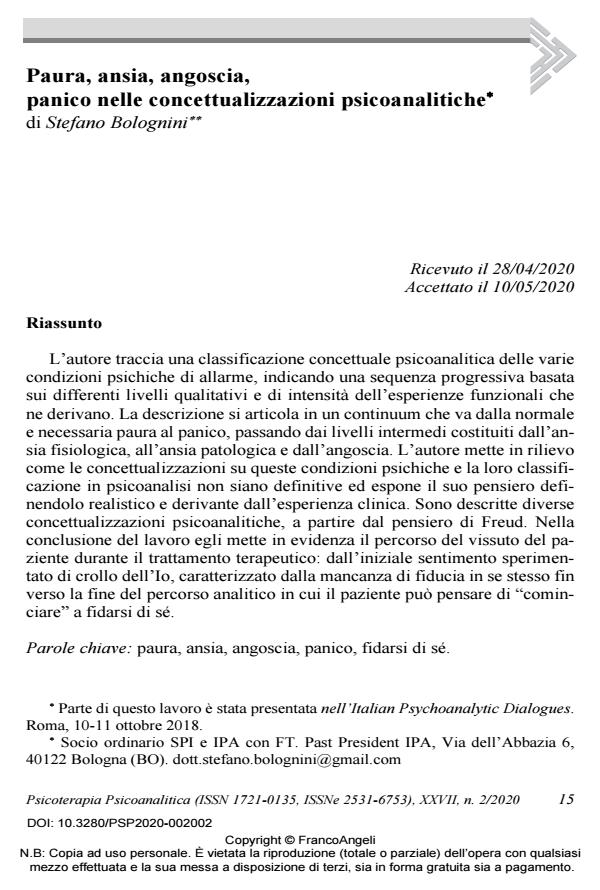Paura, ansia, angoscia, panico nelle concettualizzazioni psicoanalitiche
Journal title PSICOTERAPIA PSICOANALITICA
Author/s Stefano Bolognini
Publishing Year 2020 Issue 2020/2
Language Italian Pages 19 P. 15-33 File size 239 KB
DOI 10.3280/PSP2020-002002
DOI is like a bar code for intellectual property: to have more infomation
click here
Below, you can see the article first page
If you want to buy this article in PDF format, you can do it, following the instructions to buy download credits

FrancoAngeli is member of Publishers International Linking Association, Inc (PILA), a not-for-profit association which run the CrossRef service enabling links to and from online scholarly content.
The author traces a psychoanalytic conceptual classification of the various psychic conditions of alarm, indicating a progressive sequence based on the different qualitative and intensity levels of the functional experiences that derive from it. The description is divided into a con-tinuum that goes from normal and necessary fear to panic, passing from intermediate levels consisting of physiological anxiety, to patho-logical anxiety and anguish. The author highlights how the conceptual-izations on these psychic conditions and their classification in psycho-analysis are not definitive and exposes his thinking defining it realistic and deriving from clinical experience. Several psychoanalytic concep-tualizations are described, starting with Freud’s thinking. In the conclusion of the work he highlights the path of the patient’s experience during the therapeutic treatment: from the initial experi-enced feeling of ego collapse, characterized by the lack of self-confidence, to the end of the analytic path in which the patient can think about "starting" to trust yourself.
Keywords: Fear, anxiety, anguish, panic in psychoanalitic concepts.
Stefano Bolognini, Paura, ansia, angoscia, panico nelle concettualizzazioni psicoanalitiche in "PSICOTERAPIA PSICOANALITICA" 2/2020, pp 15-33, DOI: 10.3280/PSP2020-002002